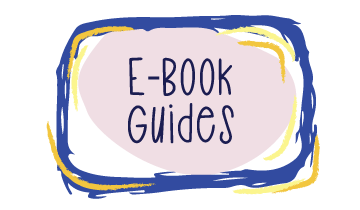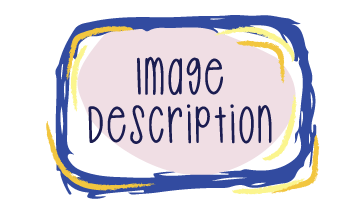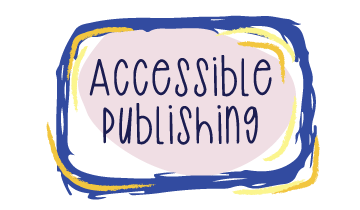
E-BOOKS
Resources
Figuring out how to incorporate accessibility into every step of the publishing process can be intimidating. To help ease the learning curve, here are some access guides written by specialists from all over the world, all of which are funded by arts and government organizations committed to expanding the reach of published material. From self-published e-books to the management of publishing companies, removing barriers to access benefits everyone.

Top Tips for Creating Accessible EPUB 3 Files
Published by Benetech, this guide shows you how to "unlock" printed matter by creating books that are "born digital" - and to include accessibility into the publishing process and design. The guide offers a concise and comprehensive list of embedded links to software such as MATHML (a way to show math equations as written rather than as images), and links to sites that explain how to create different types of accessible interactive content.
Inclusive Publishing in Australia: An Introductory Guide
Published by the Australian Inclusive Publishing Initiative (AIPI) - a collective of individuals across the publishing industry whose aim is to increase access to published material for people with print disabilities - this guide approaches inclusive publishing from both a business and social-benefits standpoint by emphasizing the untapped market of accessible publishing, as well as how to embed accessibility into every aspect of publishing workflow.
Accessible e-book Guidelines for Self-Publishing Authors
Published by the Accessible Books Consortium, in conjunction with the International Authors Forum, this guide helps authors make their readership as wide as possible through a few simple steps. It also provides an embedded checklist that writers can reference during the self-publishing process.
Accessible Publishing - Best Practice Guidelines for Publishers
Originally published as part of the Enabling Technologies Framework project, this guide published by Accessible Books Consortium is regularly updated with new information and is available in several languages. Approaching the publishing of accessible work from commercial, legal, and ethical standpoints, it encourages publishers to strive for mainstream access, to normalize born-accessible publishing, and emphasizes how ethical publishing can help every reader, regardless of ability.

Cooper Hewitt Guidelines for Image Description website is excellent introduction to writing image descriptions by the Smithsonian Design Museum.
The National Network for Equitable Library Service (NNELS) created a Guide to Image Descriptions
Part of W3C's Web Accessibility Initiative, this is an instructional guide to making digital images accessible, with a decision tree and separate guidelines for the different types of images that may appear in a digital document.
Poet Training tool is Benetech's open-source resource helps content creators learn when and how to describe images in metadata and offers interactive tools so users can practice on their own images.
How to write an image description is a guide to writing image descriptions written in consultation with people with print disabilities.
The DIAGRAM Center's image-description guideline is written in two sections: best practices concerning style, language, formatting, and layout, and best practices specific to image categories and classifications.
AccessiblePublishing.ca guide to image description explains the importance of image descriptions, and offers technical guidance and code samples, plus image-description guidelines with examples.
The American Anthropological Association guidelines for creating image descriptions are available in downloadable large-print PDF.
Inclusive Publishing article for publishers on writing effective alt text.
A detailed W3C tutorial on writing a variety of image descriptions, including for tables and forms.
Alt Text as Poetry, a collaborative project between disabled artists Bojana Coklyat and Shannon Finnegan, reframes alt text as poetry, with workshops and a workbook, available in English in several formats including downloadable Word docx, Google doc, audiobook .wav, and PDF with Spanish versions available in Word and Google doc.

Accessible Publishing Knowledge Base guide to accessibility in digital publishing by the DAISY Consortium has a section devoted entirely to EPUB files.
Access Guide is a robust introduction to WCAG and digital accessibility written in clear language.
Describing Images in Publications from Inclusive Publishing presents a webinar with best-practices tips for publishers.
Inclusive Publishing presents an information hub for the creation of accessible digital publications that includes testing methodology for reading systems.
UNICEF's initiative Accessible Digital Textbooks for All seeks to make textbooks available, affordable, and accessible for children with disabilities.
Accessible E-book Publishing in Canada: The Business Case by Laura Brady and Daniella Levy-Pinto details the advantages of "born accessible" e-book publishing.

The Internet Archive continues to build a digital library of books and digital cultural artifacts. There are currently over 3 million scanned and digital books available.
Toronto Public Library: Canada's largest public library system offers tips and guidance on how to adjust reading options for access.
Book Authority offers list of 21 e-books to read about disability.
The History of Information online resource includes a timeline that details digital book history from Edward L. Thorndike's foreshadowing of Teaching Machines and e-books in 1912 to a 24-page report published in 2021 by the American Booksellers Association claiming that Amazon's anti-competitive behaviour violates American Antitrust laws.
The Toronto Public Library (TPL) has tips for adjusting the OverDrive and Libby app settings for increased accessibility. Font style, weight, line spacing, and layout can all be adjusted, the device screen can be adjusted for bright, sepia, or dark lighting and the OpenDyslexic font is available. TPL has also curated children's collections in OverDrive, including stories with American Sign Language (ASL) videos, digital picture books with text and audio (Read-Alongs), as well as Read-Along videos, animated children's books with on-screen text and audio narration.